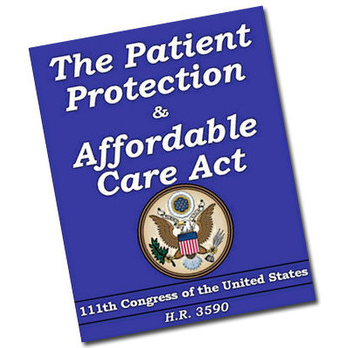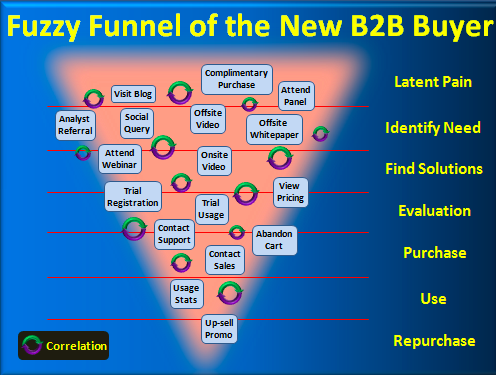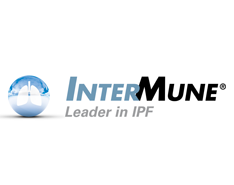The Snow® Communications Blog
Creating strong content for healthcare content marketing: 3 keys
Posted on November 5, 2013 by Joshua Schneck


Creating strong content for healthcare content marketing requires three things:
1. Focus on relevant pains, drivers and trends in the market.
2. Lead, don’t follow.
3. Integrate with your overall healthcare PR and marketing strategy.
As a Minneapolis healthcare content marketing agency, we follow a wide range of regulatory, legislative, industry analyst and marketing issues on behalf of our clients. Our job is to identify emerging trends and develop appropriate strategies, including content marketing. The best content is timely, relevant content that directly interests your customers and prospects. It positions you as an opinion leader and cutting-edge company.
Focus on relevant pains, drivers and trends in the market
Healthcare is driven by government regulation. Check websites for HHS, CMS,FDA, etc., or the specialized media and blogs that follow them. Or, follow the Tweets of folks who watch these agencies. Look not just at what’s happening now but what’s coming down next year or later. Your customers and prospects are interested in ways to respond to new laws or regulations, or soon will be. Also, follow the healthcare analysts at Gartner, IDC, The Advisory Board and KLAS Research. Even if you don’t subscribe to these services, the leading analysts like Judy Hanover of IDC or Tom Handler of Gartner are quoted in report summaries and news accounts. Big trends and drivers, like the move to mobile or the cloud, are being p0inted to years ahead by these analysts. Your customers are interested in how to respond to these trends. Why is your solution or expertise relevant? Share that. Often.
Lead, don’t follow
Per above, get ahead of the competition with some key drivers, regulatory issues and/or trends, and keep reminding customer and prospects that you are focused on helping them adapt and thrive in changing conditions. The Affordable Care Act and other changes are continuing to become legal requirements according to a set schedule. Insurance companies need to attract and engage individual customers on an unprecedented scale. ICD-10 will become a requirement for all providers next year. Now’s the time to share a vision for how to meet these new challenges.
Integrate with your overall healthcare PR and marketing strategy
Every selection of content you disseminate should reflect your overall PR and marketing strategy, and be integrated with all your other marketing tactics, including case studies, web content, trade shows, media placements, other social media. Have a few, important objectives and focus on them in every communication, including all content marketing.
Are Oreos Addictive as Cocaine?
Posted on October 16, 2013 by Joshua Schneck


Are oreos addictive as cocaine?
Yes, according to headlines from scores of news sources, including NBC, CBS, Time and The Wall Street Journal. No, if you read the otherwise decent reporting and learn that the study was on laboratory rats. The website at Connecticut College has it right in the headline, which clearly states the study was in rats.
Thanks again to Gary Schwitzer at HealthNewsReview.org for shedding light on the media practice of misleading headlines regarding scientific research. As a Minneapolis PR firm specializing in healthcare PR and food & beverage PR, we understand the need to tread carefully when promoting scientific research for our clients.
Even good reporters may have nothing to do with the headline written for their story, and the resulting issues can be thorny.
Could this have been avoided? Maybe not, as the addictive qualities of Oreos is a credible concept to anyone who has eaten them – they’ve got 34 million Likes on Facebook. And, the desire of headline writers to attract readers.
Good communications with the media always help, but for something like this it’s good to think through how the media will handle a story and plan accordingly.
As for me, I like Oreos but still miss Hydrox.
Three Keys to B2B Content Marketing for Complex Sales
Posted on October 10, 2013 by Joshua Schneck


There are three keys to B2B content marketing for complex sales – corporate law firm marketing, healthcare information technology products and services, medical device, B2B food manufacturing and other B2B products and services. These are sales with longer sales lead times and higher price tags, and rely on direct meetings and contacts to build relationships and close the deal. As a Minneapolis B2B content marketing agency, we’ve always matched PR, marketing and other services to the actual sales process of our clients. With content marketing, the opportunities for engaging prospects and clients have become better – including social media and analytic methods. We’ve found that three keys to B2B content marketing for complex sales are:
1. Have a documented content marketing strategy.
2. Match content marketing to the sales process.
3. Measure and improve the strategy as needed.
Documented content marketing strategies are more successful
According to research sponsored by Brightcove, the marketers who reported having a documented content marketing plan were more likely to say they were effective – 66%, than those who did not have a documented content marketing plan – 11%. I’d make some allowance for selection bias here, as those who invest the time and resources in developing a documented strategy might be inclined to score their efforts higher, but the point is that serious marketing efforts generally stem from a fair amount of analysis and planning. Unfortunately, content marketing is too often the flavor of the month and done on a piecemeal basis, without a formal strategy or plan.
What’s in an effective, documented content marketing strategy? At a minimum, it should set out clear goals, identify team members (including outside resources) and responsibilities, contain a SWOT analysis, and lay out basic tactics and timetable. Ideally, it should also include a description and analysis of your sales and marketing process and spell out how content marketing will support – and in some cases, lead – that process. In addition, it should identify prime topics to focus on – topics that of are interest to your prospects and customers in ways that help build a case for ultimately buying your product or service. For example, a company trying to sell software to drive efficiencies in the hospital emergency department might publish white papers, case studies, blog entries, etc. on revenue, margin, cost and quality issues for hospitals. A law firm selling intellectual property services might focus on content that explores the implication of new laws, rulings, treaties and technologies that present challenges and opportunities to their clients and prospects.
Match B2B content marketing to the sales process
As Joel York illustrates with this graphic in his excellent blog, the B2B buyer enters a “fuzzy funnel” that is built on content marketing and social media. Much of the old “solution selling” has already occurred before a sales rep has spoken with the customer. As Brent Adamson, Mathew Dixon and Nicholas Toman point out in their Harvard Business Review article:
“A recent Corporate Executive Board study of more than 1,400 B2B customers found that those customers completed, on average, nearly 60% of a typical purchasing decision—researching solutions, ranking options, setting requirements, benchmarking pricing, and so on—before even having a conversation with a supplier. In this world the celebrated ‘solution sales rep’ can be more of an annoyance than an asset. Customers in an array of industries, from IT to insurance to business process outsourcing, are often way ahead of the salespeople who are ‘helping’ them.”
The good news here is that the right mix of content marketing, matched to the actual sales process, will support your sales effort and boost inbound marketing. Careful attention to relevant government or industry standard setting developments, major trade shows, LinkedIn discussion groups, pain points and other factors will provide guidance on the mix and timing of content marketing initiatives (set out in the the documented strategy, of course). We had a patent law firm client where we focused on a key change in an obscure part of IP law. Two weeks after publishing a document on the subject, a prospect contacted the author and signed up for more than $1,000,000 in legal services.
Measure and improve the strategy as needed
In the old days of marketing, you did your best analysis, conducted effectiveness research of varying value, and prayed a lot. Today, the analytics permit fine and real time measurement of everything you’re doing in content marketing. Are you not currently measuring? You’re not alone. Only 15% of attendees as a recent content marketing conference reported good measurement. Yet, the tools are there already, via Google, your website, Twitter, etc. By tracking page views, downloads, shares, guest postings, lead generation and impact on sales, you can measure impact and ROI and make adjustments in real time. The important thing is to measure things that are critical to your actual sales process, and that offer insights of value. There’s no cookie cutter approach here. Customize it.
In addition, listen to what prospects and customers are saying in their posts, Tweets, blogs and to your sales people. If Regulation “Q” is on everyone’s mind, it makes sense to address content to that concern. With good measurement tools, and a close ear to what prospects and customer are saying, your content marketing will be relevant, timely, and most importantly, effective.
Questions? Comments?
We’d love to hear you questions or comments. Please contact me directly. As a Minneapolis B2B content marketing agency, we’re eager to keep learning and carrying on a dialogue with like-minded professionals.
Sex, Lies and Healthcare Marketing
Posted on October 1, 2013 by Joshua Schneck


Sex, lies and healthcare marketing go together all too often, but the good news is that few of the drug advertising claims on TV are actually false, according to a study published in the September 2013 issue of Journal of General Internal Medicine. Yet, as other studies suggest, drug ads may be encouraging gender bias as in the case of psychoactive drug advertising (see discussion below).
Thanks to Gary Schwitzer in HealthNewsReview.org, for writing about “Content Analysis of False and Misleading Claims in Television Advertising for Prescription and Nonprescription Drugs,” by authors Adrienne E. Faerber PhD and David Kreling PhD.
In the study, the authors analyzed TV drug ads over a two-year period and found that over half of drug claims were potentially misleading. False claims accounted for only two percent of the prescription drug ads and seven percent of the nonprescription ads.
As Gary points out from the study’s findings, the average consumer may see up to 30 hours of drug advertising while spending 15-20 minutes per visit with their caregiver.
Adding to the potential problem is the gender bias reflected in some drug advertising. For example, psychoactive drug advertising portrayed women 62 percent of the time, according to a study published in a Brazilian journal. Judy Stone writes on the issue of women and drug advertising in the Scientific American blog.
As a Minneapolis healthcare content marketing firm, we care deeply about helping our clients engage their customers in credible, sustainable ways. Sex, lies and healthcare marketing may go together sometimes, but we’re also encouraged that most healthcare marketing avoids false claims. The misleading claims issue is something for the industry to work on.
New restrictions for energy drink marketing?
Posted on September 26, 2013 by Joshua Schneck


Four U.S. Senators are calling for new restrictions for energy drink marketing, calling on 17 beverage manufacturures to avoid marketing their energy drinks to youngsters, according to an article by Keith Nunes in Food Business News. The letter states in part:
“Across the board, makers of energy drinks say they do not market their products to children,” Mr. Durbin said. “But we know that energy drinks are promoted through social media, and that samples are often distributed at places where teens hang out — like sports events, concerts, local parks, and S.A.T. prep courses. The truth is that contrary to industry claims, energy drink companies are using highly effective tools to reach young people and it is working. It’s time for these companies to heed the advice of public health experts across the country and stop telling children and adolescents to ‘pound down’ their products.”
Voluntary Adoption of American Beverage Association Requested
The Senators urged the drink manufacturers to adopt the American Beverage Association’s Guidance for the Responsible Labeling and Marketing of Energy Drinks and take other actions designed to curtail the marketing of energy drinks to young people. At a July, 2013 Senate hearing, three manufacturers, including Red Bull and Monster, agreed to adopt the Guidance.
Maureen Beach, director of communications for the American Beverage Association, responded to the Senators letter: “Our members are responsible companies that care about their consumers, especially children and young adults, as demonstrated through existing policies and programs. While A.B.A. did not receive the letter, we’re always willing to work with elected officials on behalf of our industry to clear up any confusion regarding our products and their safety.”
As a Minneapolis healthcare PR firm that is also a Minneapolis food & beverage PR firm, we firmly believe in responsible marketing to young people. At the same time, we also believe there are limits to what laws and regulations can accomplish in promoting healthy eating and drinking habits. Common sense starts at home.
Private label and digital marketing
Posted on September 25, 2013 by Joshua Schneck


Private label and digital marketing: can they co-exist? The answer is an emphatic yes, as private label and store brands join the fight for the mind and preferences of the Millenniums – AKA “generation Y.” This generation, born from the early 1980s to the early 2000s, looks to the web and mobile for information and cues about what products to buy.
Facebook, Twitter, Blogs
That means Facebook, Twitter, blogs, and consumer review sites. It also means websites and mobile apps geared toward building relationships with private label customers, the same way retail brands are doing. As a Minneapolis food & beverage PR firm and marketing agency, we offer an integrated marketing package of advertising, PR, social media, SEO and content marketing to our food & beverage clients.
Supermarket News profiled ten examples of creative marketing to advance their marketing directly to consumers. My favorite: using Twitter promotions to build awareness and reward engaged customers.
Another great article appeared recently in Private Label Store Brands, covering Jim Wisner’s presentation at the 2013 Collaboration Summit. Wisner emphasized that the retail brand threat also pointed to great opportunity for private label and store brand marketers who are ready to embrace digital marketing and social media.
Private label store brands need not wait to see their share shrink as retail brands make inroads. An integrated food & beverage PR and marketing plan can build new relationships directly with customers, while communicating the natural advantages of private label.
Can healthcare PR be a crime?
Posted on September 24, 2013 by Joshua Schneck


Can healthcare PR be a crime? In the case of ex-InterMune CEO W. Scott Harkonen, the answer is yes – according to the U.S. government, a Federal jury and the Ninth Circuit Court of Appeals. David Brown writes in The Washington Post about how Harkonen was convicted for issuing a press release that, according to the U.S. government, willfully overstated the benefits of a drug made by his company.
InterMune is a public company focused on pulmonary and orphan fibrotic diseases. It markets a medicine for idiopathic pulmonary fibrosis (IPF) and is in product development and clinical trials on other drugs.
No Factual Errors
According to Brown’s article, there were no factual errors in the press release in question. It was the interpretation of the facts that was deemed criminal. This raises troubling questions for a Minneapolis healthcare PR firm like ours, and our clients. When does promoting a point of view become a crime?
From the Post article:
“If you applied this rule to scientists, a sizable proportion of them might be in jail today,” said Steven N. Goodman, a pediatrician and biostatistician at Stanford University who submitted a statement supporting Harkonen’s appeal. “The courts don’t quite realize the significance of what is in front of them or the furor that might erupt if this kooky precedent is allowed to stand.”
Ruling a word of caution to a Minneapolis healthcare PR firm
This ruling is a word of caution to a Minneapolis healthcare PR firm that works in healthcare PR and healthcare content marketing. Can healthcare PR be a crime? It can in some cases, but there is a free speech issue here that needs to be thought through carefully.
Ultimately, it gets down to what patients are entitled to know. They shouldn’t be deceived, obviously, but should they be prevented from knowing a company’s interpretation of research facts? I don’t claim to have the answer, but it’s a question worth asking.
Bringing clarity to medical device PR
Posted on September 23, 2013 by Joshua Schneck


Bringing clarity to medical device PR is a long standing goal of this Minneapolis healthcare PR firm.
MR Instruments is a producer of high-resonance MRI technology and developed the medical technology industry’s first 3T (Tesla) MRI coils for the most demanding MRI applications. The clarity of image MR Instruments helps produce for physicians was our inspiration for bringing clarity to MRI’s target audiences: MRI manufacturing companies, MRI users and buyers and key influencers.
MR Instruments hired Snow to increase visibility of this new technology and officially launch its flagship product at the RSNA Conference in Chicago. Snow Communications drew on its deep expertise and experience in medical device PR and medical device content marketing to bring about good results for MRI.
For more details, please see the case study.
Can you trust clinical practice guidelines?
Posted on September 18, 2013 by Joshua Schneck


Can you trust clinical practice guidelines? Thank you, Gary Schwitzer of HealthNewsReview.org for an excellent blog post on the BMJ (British Medical Journal) article about conflicts of interest on clinical practice panels. The BMJ article details some of the types of conflicts common on the clinical practice panels that issue treatment guidelines.
As a Minneapolis healthcare PR firm dedicated to promoting the transformation of healthcare to a patient-focused, outcomes-based model, we believe it is vitally important that engaged patients receive evidence-based, unbiased information.
For example, in the controversial area of PSA testing, the article notes that The American Urological Association’s best practice update in 2009 and its 2013 practice guidelines reflected potential conflicts of interest in the context of association sponsorship, committee chair conflicts and multiple panel member conflicts. The article contrasts this with the conflict-free status of the U S Preventive Services Task Force in 2012.
Who do you believe?
While the U.S. Preventive Services Task Force found harm from routine PSA testing and no evidence of net benefit, the American Urological Association 2009 guidelines promoted routine PSA testing. In 2013, the Association revised its guidelines to reflect a more conservative approach to PSA testing.
As noted elsewhere, studies have found troubling patterns of conflicts of interest in practice guideline panels, and or lack of full disclosure of those conflicts. Part of the answer is the new Physician Sunshine Act, which we’ve written about previously, that requires the reporting of financial payments to physicians by pharmaceutical and medical device companies.
Avoiding Red Flags
The BMJ authors recommend that professional journals avoid the following red flags:
-
Sponsor(s) is a professional society that receives substantial industry funding;
-
Sponsor is a proprietary company, or is undeclared or hidden
-
Committee chair(s) have any financial conflict*
-
Multiple panel members have any financial conflict*
-
Any suggestion of committee stacking that would pre-ordain a recommendation regarding a controversial topic
-
No or limited involvement of an expert in methodology in the evaluation of evidence
-
No external review
-
No inclusion of non-physician experts/patient representative/community stakeholders
-
*Includes a panelist with either or both a financial relationship with a proprietary healthcare company and/or whose clinical practice/specialty depends on tests or interventions covered by the guideline.
Please take note, healthcare PR professionals, healthcare marketing professionals and journalists. And for full disclosure, this Minneapolis healthcare PR firm works for the parent company of an online source of unbiased medical reference and clinical recommendations. The client had nothing to do with the writing of this blog post, and I take full responsibility for its contents.
Healthcare Transformation and Content Marketing
Posted on September 17, 2013 by Joshua Schneck


Healthcare transformation refers to the fundamental change going on in the healthcare industry, especially the ongoing transformation from a fee-for-services to an outcomes-based model. Transformation is being driven by meaningful use, value-based purchasing, accountable care organizations (ACO’s), the Affordable Care Act (Obamacare), and advanced clinical decision support. Summed up, these changes are about aligning incentives and using advanced technology to improve outcomes. For a Minneapolis healthcare content marketing firm, there is much to communicate about, and we’re excited to be part of this transformation.
The first step is to understand the bigger issues. As a Minneapolis industry analyst relations firm, we work closely with a number of the top research firms, including Gartner, IDC and The Advisory Board. Each of these organizations has written extensively about healthcare transformation. In addition, some of the better sources of information about healthcare transformation are The Center for Healthcare Research and Transformation, The Joint Commission Center for Transforming Healthcare, and The Institute for Health Technology Transformation.
It’s important to follow the law-making and rule-making processes in government. As a Minneapolis government relations firm, we develop and implement effective government relations strategies. We keep clients up to speed on legislative and regulatory trends and developments, and represent our clients before Congress and Federal agencies. Snow has worked with the FDA, HHS, OMB and other agencies. Snow prepares comment letters to Federal and state agencies, meets with Congressional staff to share perspective and seek assistance, sets up meetings with policy makers, produces testimony and whitepapers, and arranges for legislation to be introduced.
Based on well grounded, current knowledge, we provide strategy development and implementation. Suppliers to the healthcare market must communicate how their products and services will help providers meet the new challenges and opportunities in healthcare. Providers must reach out to patients in new ways, emphasizing better outcomes and patient engagement.
For a Minneapolis healthcare PR firm like ourselves, we understand the need to help clients create strategies for thought leadership through content marketing, PR, SEO and SEM and other, integrated approaches. Working with our clients, we help them create original content to drive aggressive content marketing that builds recognition for our client’s solutions, products, people and perspective, while also driving improved SEO and social media.








